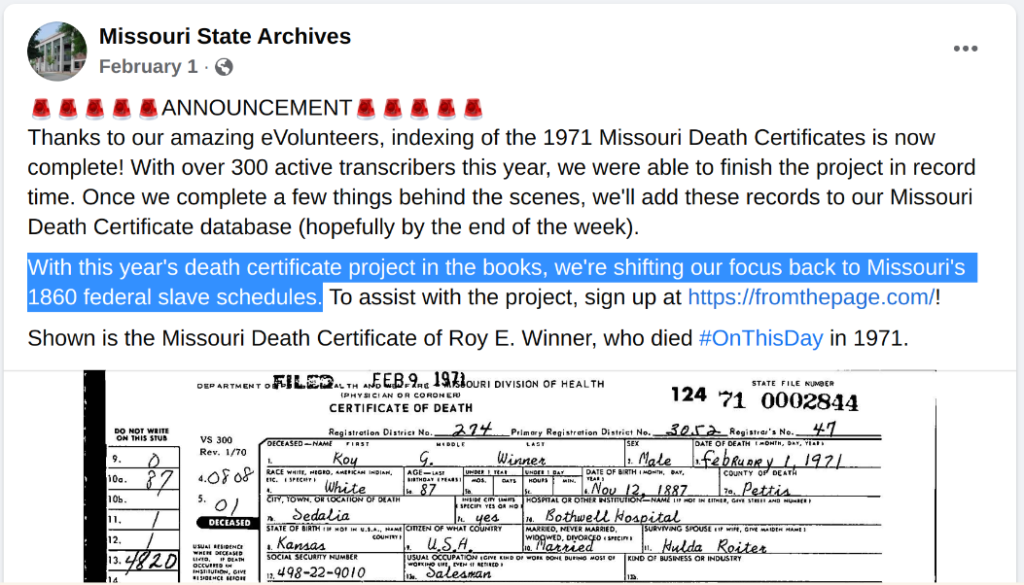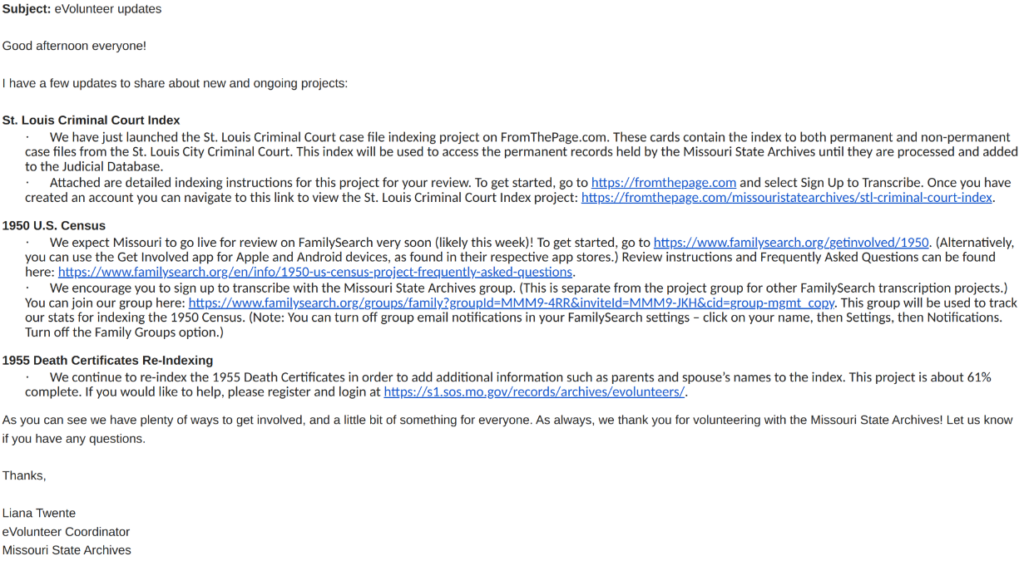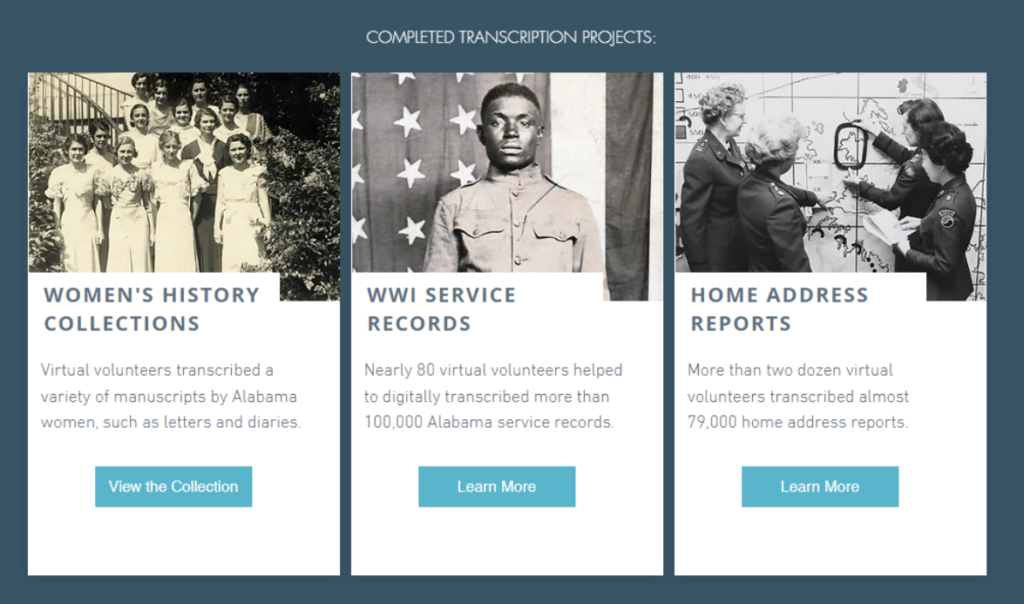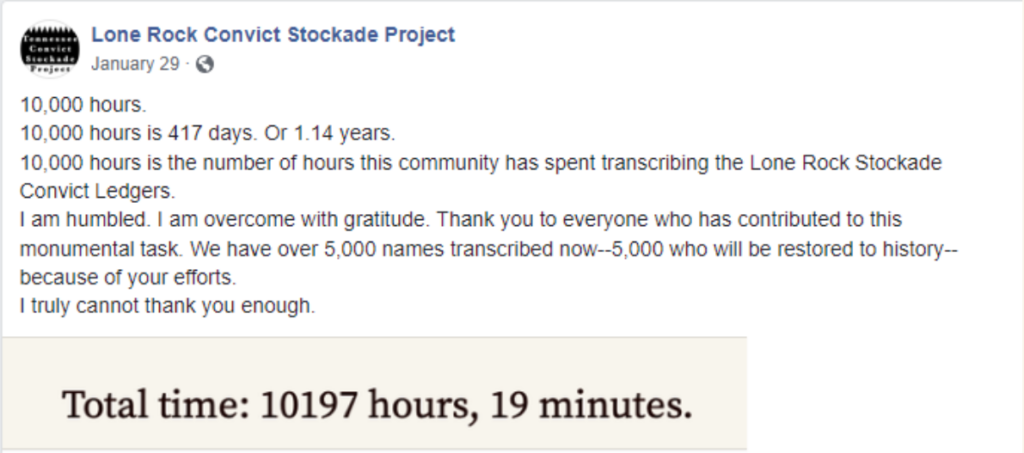Let’s talk about what happens after crowdsourcing projects are done. There are two things to think about here: what happens to the volunteer community, and what happens to the data? In this newsletter we’re going to dive deep into the first.
Just like we have a responsibility not to waste volunteers’ labor, successful projects recognize that volunteers make social connections through their work and have formed a real community. When a project ends, volunteers can be saddened to lose the experience. One option is to point them to other projects at your institution, as you see in this social media post:
What if you don't have a project ready, or the projects you do have don't match volunteers’ skills and interest? You can point volunteers to similar projects at other institutions while reassuring them that you’ll let them know about new projects at your own institution when they are available.
This email goes out to current volunteers for Missouri’s projects, but also former volunteers who might have moved on to other institutions' projects and would be interested in returning to Missouri when a new project goes online.
And we do see people moving from one project to another. This is a graph of one volunteer’s contributions to four projects at three other state archives after their initial project at the Alabama was finished.
It’s also important to acknowledge your volunteers in some way at the end of the project. We really like how Alabama gives a count of volunteers records for these projects.
This is an amazing social media post by the historian running the Lone Rock Stockade Convict Ledgers project.
Transcribers aren't robots, but volunteers engaging in meaningful work. Their efforts help us unlock the stories and knowledge hidden within historical documents. Honor their efforts and connections by pointing them towards new projects within your institution, recommending opportunities elsewhere, and giving credit to recognize and value their skills and interests.





